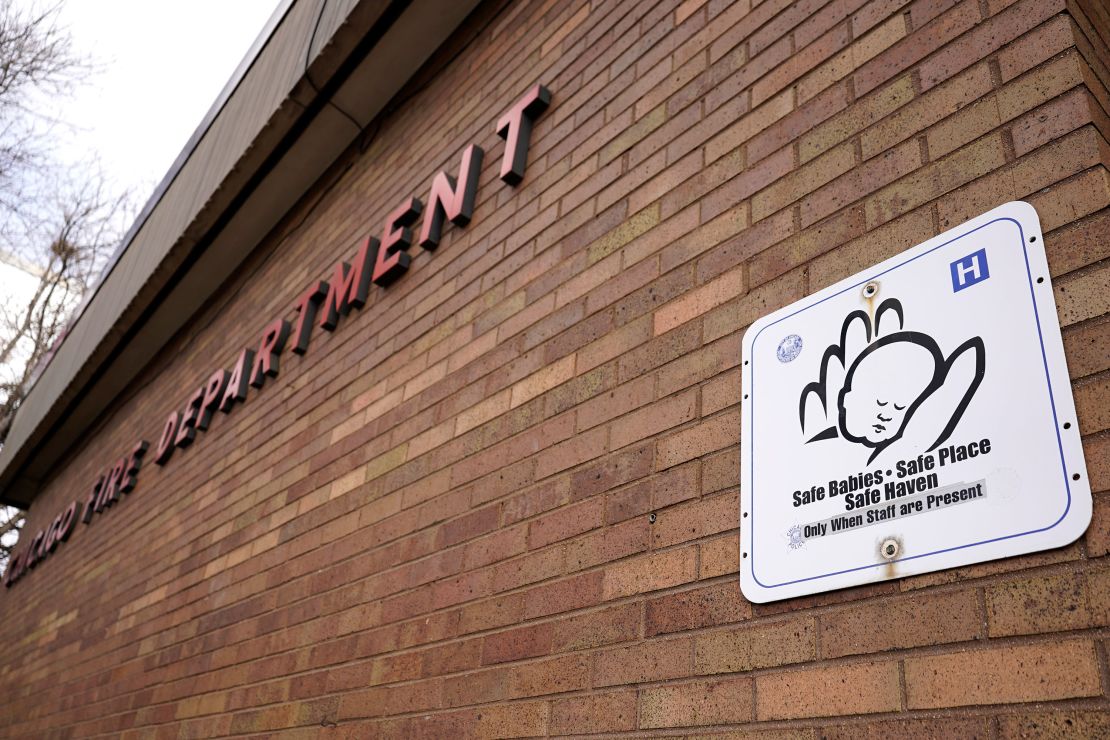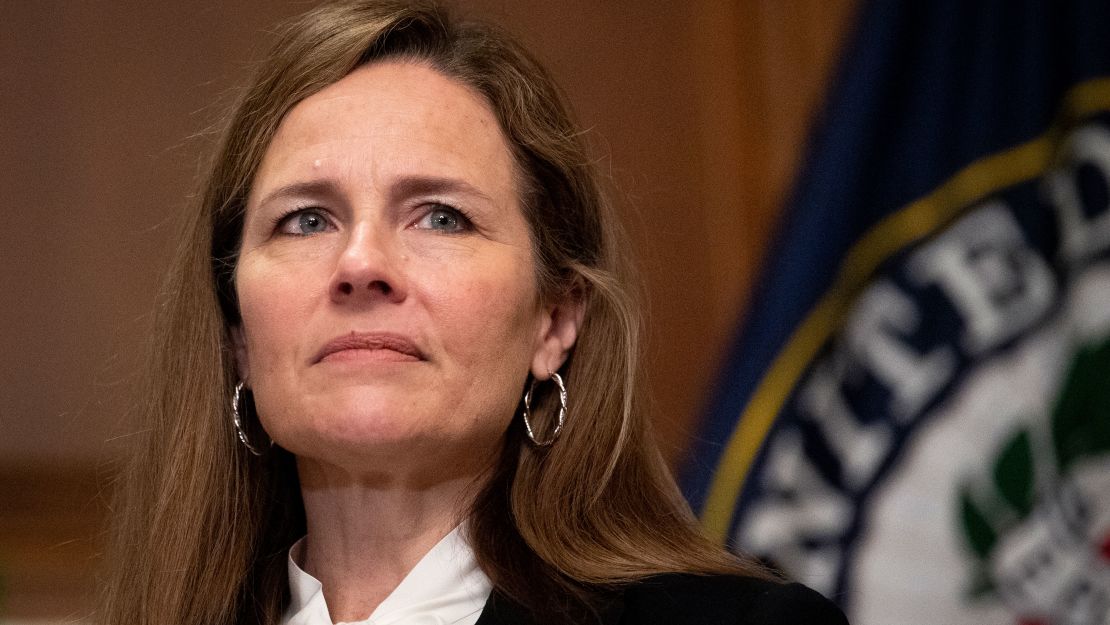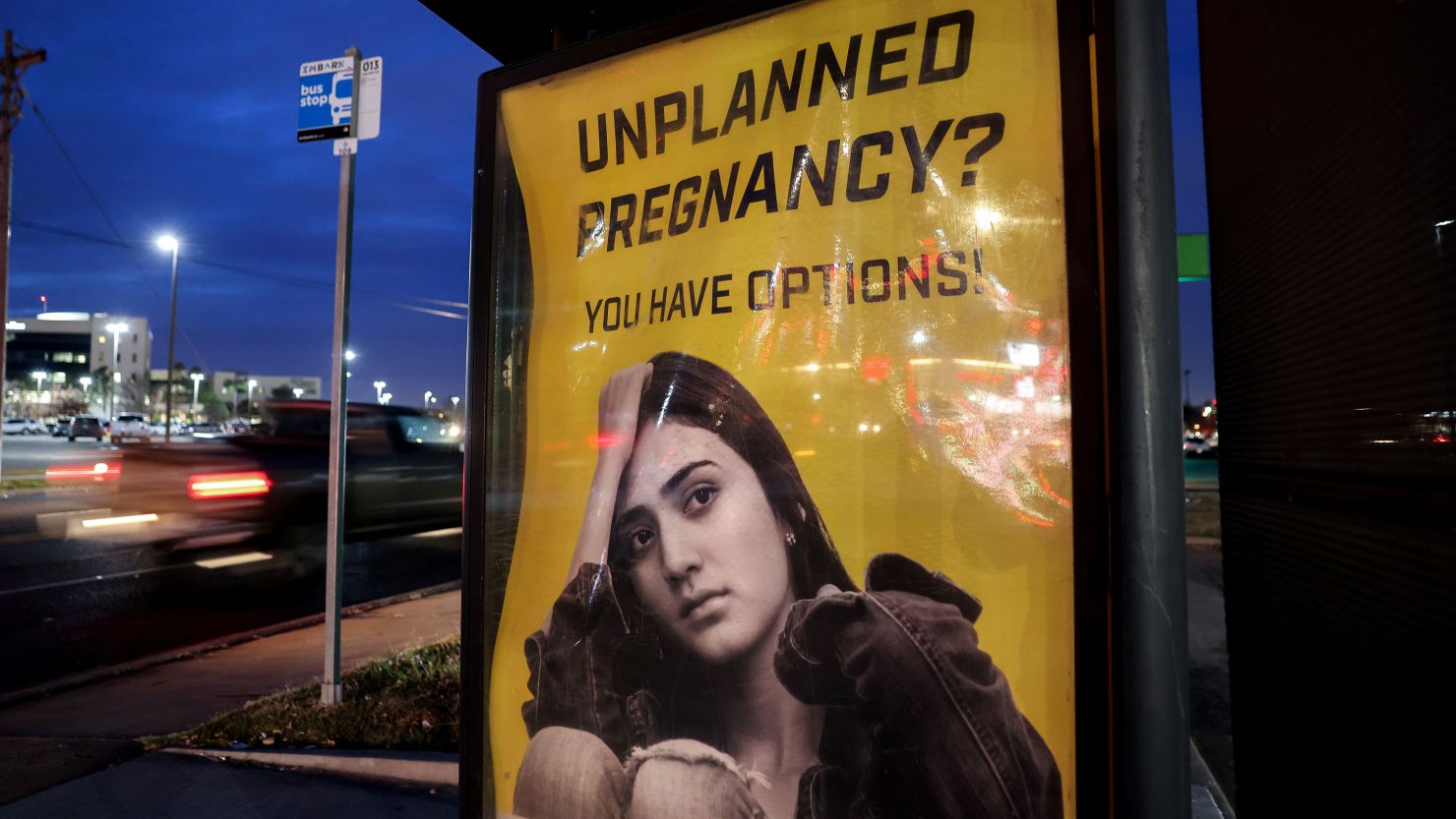As many American women reckon with the sudden loss of their constitutional right to abortion, conservatives have floated an alternative they say makes abortion less necessary: safe haven laws.
The laws, which allow mothers to anonymously abandon infants at hospitals and other designated sites shortly after giving birth, have been in place in all 50 states since 2008.
Two conservative Supreme Court justices nodded to safe haven laws during the case that overturned Roe v. Wade. Justice Samuel Alito noted in the majority opinion that Americans who want to restrict abortion point to the laws as an option for women. During oral arguments, Justice Amy Coney Barrett conceded that pregnancy is an infringement on bodily autonomy but distinguished that from concerns over forced parenthood and echoed a sentiment anti-abortion activists have been pushing for decades, asking: “Why don’t the safe haven laws take care of that problem?”
But American women — even in states where in recent years they have had little access to abortion — rarely use safe havens as an option. A CNN review of the laws found that there have been at least 3,251 babies surrendered since 1999. Some states go years without a woman using the option. CNN reached out to social services agencies in all 50 states — 40 states provided figures while seven states told CNN they do not process data on safe haven use, partially because incidents are so rare. Three didn’t provide data.
When women don’t have an abortion but opt not to raise the child, they more frequently turn to traditional adoption, which gives biological parents control over the placement of an infant and can allow for a longterm connection with the child through open adoption. Even so, the numbers in the United States are relatively low — in 2020, there were roughly 95,000 children who were adopted. This figure includes children who are adopted by family members and stepparents. Meanwhile, nearly a million American women received abortions in 2020.
Northwestern University professor Katie Watson, who teaches law, ethics, and humanities to medical students, said the conservative argument that safe havens are an alternative to abortion is disingenuous.
“When a person has an abortion, they are saying, ‘I do not want to have a baby.’ And adoption (or using a safe haven) does mean they don’t have to parent the child, but they still had a baby, which was the thing that most people having an abortion did not want to do,” Watson said.
Safe havens aren’t new
Safe havens were never intended to serve as an alternative to abortion. They were developed to offer an alternative to infanticide, Watson said.
Texas passed the nation’s first safe haven law in 1999 after a spike of deserted babies in the Houston area. It allowed a mother or father to surrender their baby at any hospital, fire station or emergency medical services station in Texas. The only condition was that the baby not be more than 30 days old. Today, the law allows up to 60 days.
By 2008, all 50 states had adopted their own safe haven laws. The pace at which the relatively obscure concept gained steam in state legislatures was due to widespread public support on the issue, said Dr. Suzanne B. Haney, who chairs the Council on Child Abuse and Prevention at the American Academy of Pediatrics.
“We’re talking about babies being left in dumpsters. I mean, that’s a really easy bandwagon to get onto,” she said.
Carol Sanger, a law professor at Columbia University, agreed with Haney but indicated that some abortion rights activists and legislators worried the laws were a distraction from the larger reproductive rights conversation, but felt they had little choice but to be on board.
“If you don’t agree with safe havens, it’s like you can be accused of encouraging infanticide,” Sanger said.

The laws vary by state. In North Dakota, for example, babies under a year old can be abandoned at a designated safe haven site, which includes police stations, hospitals and even county social services offices. In Alabama, parents only have three days and the baby must be taken to a hospital.
There’s been a recent push to expand safe haven laws. In March, Virginia lawmakers passed four bills to expand the state’s laws. In early June, Mississippi Gov. Tate Reeves penned a column for a Christian news website, titled “The New Pro-Life Agenda,” where he promised to “extend safe haven laws.” Last year, legislation expanding safe haven protections passed in Indiana and Pennsylvania.
Perhaps safe havens are doing their job: Incidents of infant homicides have become less frequent. According to a 2020 Centers for Disease Control and Prevention report that looked at infant homicides and safe haven laws, the overall US infant homicide rate fell by 66.7% from 2008 to 2017 — after all 50 states had safe haven laws on the books. Babies are still 5.4 times more likely to be killed on the day they are born than at any other point in life.
But Watson, the Northwestern professor, said the existence of safe haven laws may not be the only reason why fewer infants are dying by homicide.
“Our recognition and treatment of prenatal and perinatal depression — maternal depression — is so much better,” Watson said. “The awareness that pregnancy can mess with your head and your mental health sometimes may contribute to that lower rate of infanticide.”
The anti-abortion movement’s ‘prominent’ connection to safe haven laws
In the early 1970s, decades before safe haven laws were implemented, Monica Kelsey was abandoned by her biological mother at a hospital on the day she was born. Kelsey, who was adopted by an Ohio family, in 2016 founded Safe Haven Baby Boxes, a nonprofit that has installed more than 100 electronically monitored baby boxes at fire stations and hospitals across seven states. The boxes allow individuals to anonymously deposit unwanted infants.
On her personal website, Kelsey advertises herself as “a pro-life advocate and speaker” but, in an interview, she emphasized that her organization depended on workers and volunteers from both sides of the debate. She noted that baby boxes are aimed at helping women who’ve already given birth.
“These babies — they’re (already) born,” Kelsey said. “This isn’t a pro-life or pro-choice issue that we’re working with.”
Kelsey’s position — having one foot in the anti-abortion fight and another in the safe haven movement — isn’t unique. The efforts have long been intertwined. They share much of the same religious rhetoric and influence. The first safe haven law in Texas was called the ‘Baby Moses’ Law, named for the Biblical story of Moses’ rescue. In Missouri, parents can drop a child at a crisis pregnancy center, which are often faith-based organizations that aim to dissuade women from getting an abortion and are exempt from regulatory oversight that govern health care facilities, in addition to a hospital or a fire station. In some states, such as Arizona and New Hampshire, a parent can surrender a baby at a church, despite the fact that they lack medical resources. Religious groups such as the Catholic Church promote safe haven laws on their websites. “Choose Life” license plates in states such as Connecticut, New Jersey and Washington, DC, help finance safe havens.
To those paying attention, Coney Barrett’s line of questioning on safe haven laws during the oral arguments in the Dobbs vs. Jackson Women’s Health Organization case may have sounded familiar. She pushed the lawyer representing Jackson Women’s Health to separate parenthood from pregnancy — a common narrative from anti-abortion groups, according to Watson — and framed the choice as one between undergoing an abortion at fetal viability, or 23 weeks, or waiting to “terminate parental rights at the conclusion.”
The language was remarkably similar to an amicus brief filed more than a year earlier by The Justice Foundation, an influential conservative legal non-profit, on behalf of 336,214 signers of a “Moral Outcry” petition. The Texas-based foundation argued that safe haven laws eliminate any legal need for abortion, in one instance contending that, under the 15-week Mississippi law, a woman could “simply wait a relatively short while later and place the child with the state after birth at no cost whatsoever.”
The brief’s conclusion was even more explicit: “The Safe Haven laws give women total freedom from burdens of unwanted children.”

But experts say Coney Barrett’s comments from the bench ignore the dangers of childbirth — American women are 14 times more likely to die from childbirth than they are from a legal abortion, according to a 2012 study — and the months-long physical and financial demands of pregnancy. Lawyer Julie Rikelman, who represented the Mississippi clinic in the Supreme Court Case, highlighted these issues in her response to Coney Barrett.
“Pregnancy itself is unique. It imposes unique physical demands and risks on women and, in fact, has impact on all of their lives, on their ability to care for other children, other family members, on their ability to work,” she said.
The fixation on safe haven laws by some of the nation’s most prominent anti-abortion legal scholars punctuated their decades-long collaboration with safe haven activists, said Laury Oaks, a professor at University of California, Santa Barbara, and author of a book on safe haven laws and reproductive justice.
The anti-abortion movement’s connection to safe haven laws is “so prominent,” Oaks said. “Amy Coney Barrett very publicly connected the dots.”
What does a post-Roe America mean for safe havens? Maybe not much
Safe havens are unlikely to see a meaningful surge in popularity in a post-Roe America, according to Joanna Grossman, a law professor at Southern Methodist University, who has written about safe haven laws.
Without the protection Roe v. Wade provided, women will face more challenges in obtaining abortions: They will have less time to make a decision, and it may be more difficult to get one. This could mean women will seek out more dangerous options, including some self-induced abortion methods.
“Changing the rules on abortion does not really change whether people want an abortion or even whether they’re able to get it, but it changes how it happens,” Grossman said.
For those women who want an abortion and are unable to obtain one, even legally, they typically won’t turn to safe havens or adoption. Most women will probably choose to raise the babies themselves, according to data from the Turnaway Study, which was conducted at the University of California, San Francisco, and examined the effects of unwanted pregnancy on nearly 1,000 women’s lives over the course of five years. The study revealed that for women who sought an abortion but were denied one, just 9% decided to put the baby up for adoption.
The Supreme Court’s three liberal justices touched on the study in their dissenting opinion and on the conservative majority’s focus on safe haven laws.
“The majority briefly notes the growing prevalence of safe haven laws and demand for adoption,” wrote Justices Stephen Breyer, Sonia Sotomayor and Elena Kagan. “The reality is that few women denied an abortion will choose adoption. The vast majority will continue, just as in Roe and Casey’s time, to shoulder the costs of childrearing.”
Several experts told CNN that activists and governments should instead focus on how to prevent babies from being deposited at safe haven sites to begin with.
Oaks, the author of a book on safe haven laws, talked about the need for more awareness around existing social welfare programs so women can raise babies themselves. Haney, who works at the American Academy of Pediatrics, argued for, among other things, better paid parental leave and robust mental health support for new mothers. Sanger, the Columbia law school professor, said the United States needs to provide women with more options — including early access to abortion — before they feel the only choice is to abandon their baby.
“I don’t think that safe havens should be celebrated,” Sanger said.
CNN’s Casey Tolan contributed to this report.








